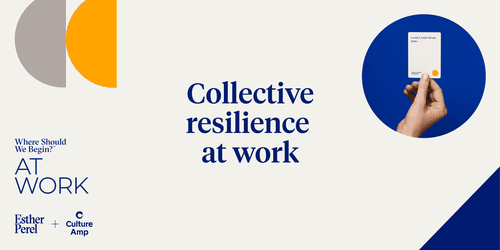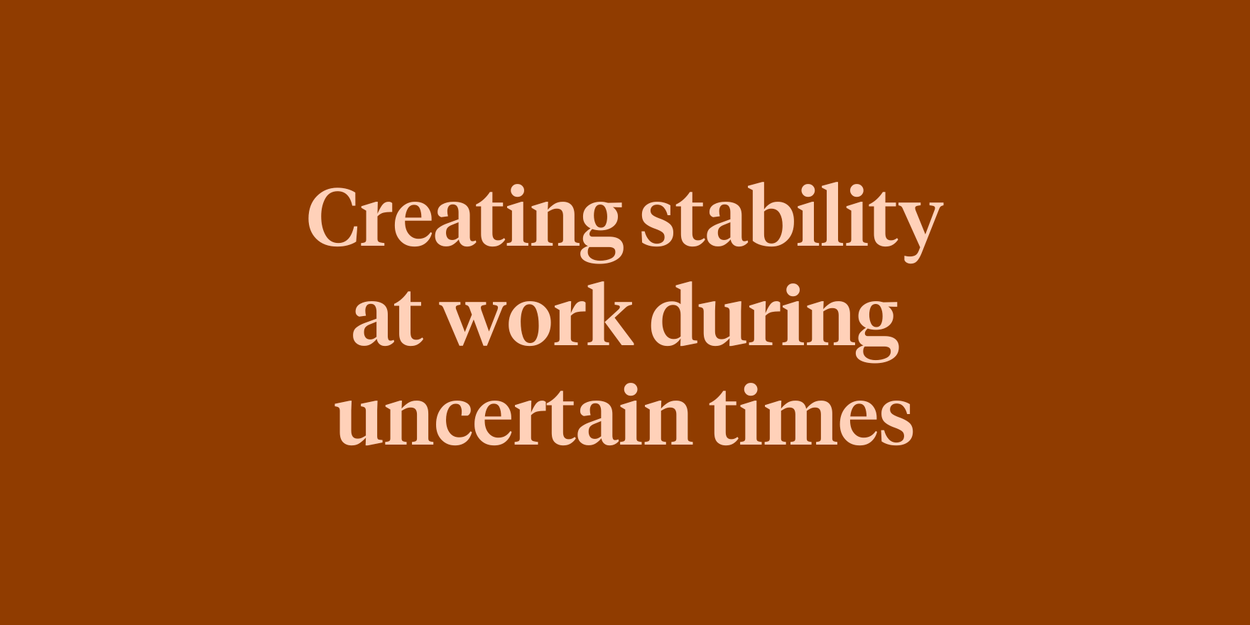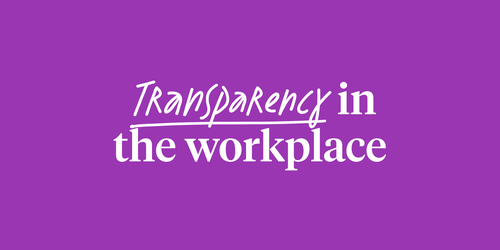
7 steps to building stability at work in uncertain times

Written by

Writer, Culture Amp
In this blog
Navigating a team through economic uncertainty and rapid technological change – like the rise of AI – is no easy task. Employees, managers, and business leaders all feel the pressure to adapt, perform, and stay ahead. If fear, frustration, and anxiety creep in, it’s critical to take action before they lead to burnout, disengagement, and a dip in performance.
PwC’s Global Workforce Hopes and Fears Survey 2024 found that more than half of workers feel there’s too much change at work happening at once. When workers feel overwhelmed by the pace of change, it can affect morale, productivity, and team dynamics.
At times like these, leadership is in a position to ease employees’ concerns. Creating a sense of stability isn’t about ignoring the uncertainty: it’s about responding to it with transparency, empathy, and a human-centered approach. The right work environment won’t just help your people survive change; it will help them thrive through it.
1. Communicate clearly and often
First and foremost, keep your team informed. Share what you can about the company’s direction, financial health, and how roles may evolve. When employees feel out of the loop, their uncertainty can quickly turn into worst-case-scenario thinking, leaving them feeling anxious, isolated, and burned out. Transparent, consistent communication helps lower stress levels and build trust.
Now, odds are you won’t have all the answers, but even just acknowledging your team’s concerns and creating a space for them to voice their fears and ask questions can have a positive impact on their wellbeing. Proactively holding open, honest conversations, whether through team meetings, town halls, Q&A sessions, or anonymous surveys, reminds employees they’re not alone and that you care about their experiences and perspectives.
2. Emphasize human-centric skills
It never hurts to let your team know how much you value their contributions. Start by recognizing and celebrating the uniquely human skills that technology can’t replicate – like empathy, creativity, critical thinking, collaboration, and leadership.
If your company plans to expand the use of AI tools, explain that these tools are designed to enhance the work of human employees. Show how these tools can help streamline repetitive or time-consuming tasks, like drafting emails, summarizing meeting notes, or analyzing data, so employees can focus more on the strategic, creative, and relationship-driven parts of their roles.
By demonstrating how AI tools can benefit your team, you may be able to shift their mindset and get them thinking about how they’d like to see their role evolve.
3. Reinforce purpose and values
During times of uncertainty, showing employees that their work is meaningful can provide much-needed clarity and direction. When people connect their day-to-day tasks to a larger purpose, it can create a sense of stability and resilience.
Anchor your team’s efforts in your organization's mission and company values – core elements of your company culture that remain steady even as tools, strategies, or structures shift. This sense of shared purpose builds community and serves as a North Star, guiding employees through periods of change.
When individuals understand how their contributions support broader company goals, they tend to feel more motivated, engaged, and like they belong. People want to feel like they’re part of something bigger than themselves, and purpose-driven work helps make that happen.
4. Create predictability
As a manager, you can help ease employee anxiety by creating structure and clarity in their day-to-day work. Establishing predictable routines, clear goals, and consistent communication helps employees feel more grounded. When people know what’s expected of them, they’re more confident in their work – and more optimistic about the company’s direction.
This kind of stability doesn't require sweeping changes. It can be as simple as setting regular 1-on-1s, sharing weekly priorities, or clarifying how team goals ladder up to business outcomes. These touchpoints provide psychological safety and reduce the cognitive load that uncertainty and instability often create – freeing up employees to focus, perform, and adapt with more confidence.
5. Strengthen psychological safety
The last thing you want is for employees to suffer in silence. Instead, foster a supportive culture where people feel safe asking questions, opening up about their feelings, and sharing ideas about how to adapt.
As a manager, you can cultivate this open environment by investing time in building relationships, communicating with your team, and fostering mutual respect. You don't need to have all the answers – what matters is creating a space where issues can be discussed and addressed collaboratively. When employees know they won’t be judged or dismissed, they’re more likely to speak up, contribute, and work through challenges together.
6. Recognize and celebrate wins
In uncertain times, recognizing progress – no matter how small – goes a long way. Celebrate the employees who continue to show up, contribute, and help the company move forward. If you can offer financial incentives to recognize employee contributions, that’s a great way to show your appreciation! But if budgets are tight, even a simple shoutout in a team or department meeting makes a difference. Public recognition can boost morale and remind your team that their efforts are seen and valued.
If your organization is interested in promoting AI adoption or cost-conscious thinking, you could recognize individuals who find creative uses for AI tools that save time or reduce expenses. These moments of recognition can double as mini internal case studies, showcasing what’s possible with this technology, inspiring others to think outside of the box, and reinforcing a culture of innovation. Of course, public recognition for any project or contribution can also help build employee confidence and foster a sense of shared progress, so celebrate your team's wins early and often.
7. Lead by example
As a manager, your direct reports pay attention to and mirror your behavior – whether consciously or not. Your tone and presence set your team’s emotional climate, so be intentional about how you respond to organizational changes. In a sea of uncertainty, think of yourself as the steady captain your employees trust to guide them toward smooth waters. Demonstrating calm, confidence, and resilience is likely to instill the same attitude in your team.
Check out our report, The leadership advantage: How great leaders elevate organizational performance, to learn how strong leadership drives business success.
Navigating change with confidence: The Culture Amp Advantage
The world is evolving faster than ever, and as a leader, it's your job to stay ahead of the trends shaping your employees’ daily experiences. But you don’t have to do it alone.
Culture Amp is the employee experience platform designed to help modern leaders support their teams through change, uncertainty, and transformation. From performance conversations to real-time recognition, Culture Amp gives you the tools to lead with confidence and care, like:
- 1-on-1 conversations: Empower employees with shared ownership of your time together, building trust and stronger communication.
- Shoutouts: Reinforce morale by recognizing contributions and celebrating wins both big and small.
- Continuous feedback: Fuel development by creating a culture of real-time, actionable feedback.
- Goal management: Set clear, aligned objectives so employees understand what’s expected of them and why.
- Skills coach: Sharpen your leadership skills with daily bite-sized, interactive leadership exercises you can complete in just minutes.
- AI Coach: Get personalized insights, expert guidance, and actionable plans to help you coach your team, especially through challenging moments and periods of change.
Culture Amp has you covered with all the tools and insights you need to support your team, strengthen your culture, and lead through change with confidence.
Discover how you can build a more resilient, future-ready workforce.
See the Culture Amp platform in action today



